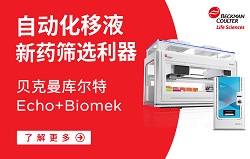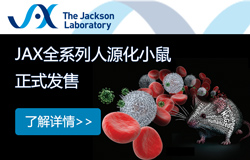Isolation and long-term cultivation of Human Corneal Endothelial Cells
Coating of the Culture Dish Surfaces
Culture dishes were incubated with a film of a 1:1 mixture of laminin (10 μg/ml and chondroitin sulfate (10 μg/ml) solubilized in selection medium at room temperature for 1-2 hr. The coating solution was aspirated and the dishes washed once with HBS.
Subcultures of Human Corneal Endothelial Cells
1. Corneas were removed from postmortem human eyes.
2. Corneas were excised and stored in primary cell media supplemented with 1% chondroitin sulfate and 10% FCS at 37°C.
3. The corneas were transferred to a plastic dish with the epithelium turned downwards.
4. The endothelium was covered with a few drops of enzyme solution.
5. Trypsinization of Human Corneal Endothelial Cells (HCECs) was carried out with a solution of primary cell isolation and corneas were incubated at 37°C for 90 min.
6. Collagenase was used at concentrations of 0.025%, 0.04% and 0.5% in a 1:1 mixture of primary cell solution.
7. Corneas were treated with the highly concentrated collagenase solution (0.5%) for 1.5 hr at 37°C, which was in some cases followed by a long-term incubation together with a low concentration (0.04% or 0.025%) of the enzyme for 17 hr.
8. For isolation of HCECs the endothelium was rinsed with 20 ml of primary cell solution using a sterile syringe combined with a thin needle.
9. Isolated cells were separated by centrifugation at 900 g for 10 min, resuspended in 0.5 ml selection medium (primary cell solution plus 7.5% respectively of NCS and FCS, both CM preadsorbed and predialysed, 0.08% chondroitin sulfate, 0.4 μg/ml FGF, and 50 μg/m gentamycin) and seeded in one well of a 24-well plate.
10. All culture dishes used for HCECs were coated as described below.
11. The cells were maintained at 37°C in a humidified atmosphere containing 5% CO2.
12. NCS was prepared as FGF and platelet-derived growth factor (PDGF) as follows: 100 ml NCS were centrifuged at 170,000 g for 90 min at 18°C in an ultracentrifuge.
13. A film of lipids remained on the surface and was removed.
14. The NCS was dialyzed for 24 hr three times against a 50-fold volume of water (tissue culture grade) and once against a 2-3-fold volume of primary cell solution.
15. The dialysed NCS was applied on a column of CM-Sephadex C50 (20 X 5 cm) previously equilibrated with 50 mM sodium phosphate, pH 6, for removal of FGF and PDGF.
16. CM-adsorbed, dialyzed FCS was prepared in the same manner, except that the centrifugation step was left out.
17. The eluted sera were used for supplementation of the selection medium.
Subcultures of Human Corneal Endothelial Cells
1. Medium was removed from the confluent primary cultures, cells rinsed once with HBS and further treated with a 0.1%/0.02% trypsin/EDTA solution for approximately 5 min.
2. Selection medium was added to the completely detached cells and the cells were replated at a split ratio of 1:2 to 1:4 on coated substrates.
3. FGF (0.4 μg/ml) was added every 2-3 days.
4. After six to ten passages monolayers of HCEC were maintained for 1 week in selection medium supplemented with 52.6μg/1 L-valine.
5. For complete removal of contaminating fibroblasts the HCECs were trypsinized as described above and seeded at clonal density (10-30 cells/well) on microtiter plates.
6. Selection medium was replaced by normal growth medium (primary cell solution containing 0.08% chondroitin sulfate, 10% NCS, 0.4 μg/ml FGF and 50 μg/m gentamycin).
7. The NCS used for this medium had been centrifuged in an ultracentrifuge as already described.
Clone Growth Assay
HCECs (2.5-3 X 103) in 2.0 ml selection medium containing 5% CM-absorbed NCS were seeded per 9.6 cm2 dish. Only the corner wells of six-well plates were used. Medium was changed every 2-3 days. After 2-3 weeks the cells were trypsinized and cell numbers determined using a Coulter Counter.
Whole corneas were cut in quarters, and the endothelium was released from contact inhibition by producing a 2-mm scrape wound with a silicon-coated needle.
References
1. K Engelmann, M Böhnke and P Friedl. Isolation and long-term cultivation of human corneal endothelial cells. Invest. Ophthalmol. Vis. Sci. 1988; 29: 1656-1662.
2. Tadashi Senoo and Nancy C. Joyce. Cell Cycle Kinetics in Corneal Endothelium from Old and Young Donors. Invest. Ophthalmol. Vis. Sci. 2000; 41: 660-667.
3. Chen KH, Azar D, Joyce NC. Transplantation of adult human corneal endothelium ex vivo: a morphologic study. Cornea. 2001; 20: 731–737.





